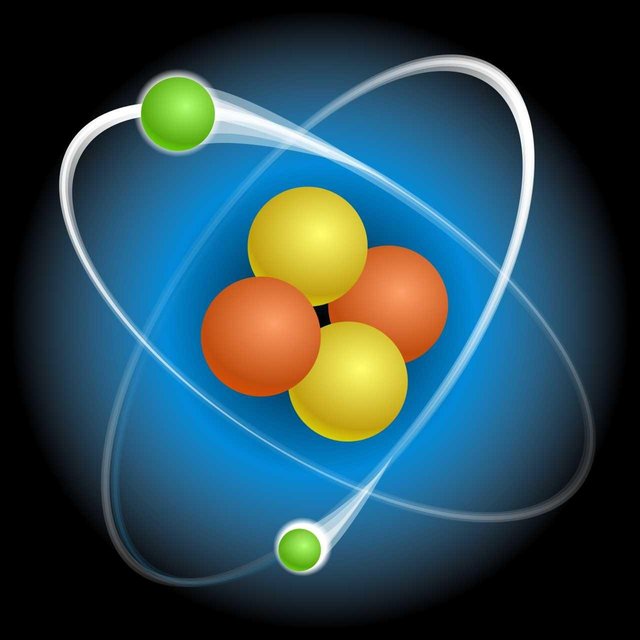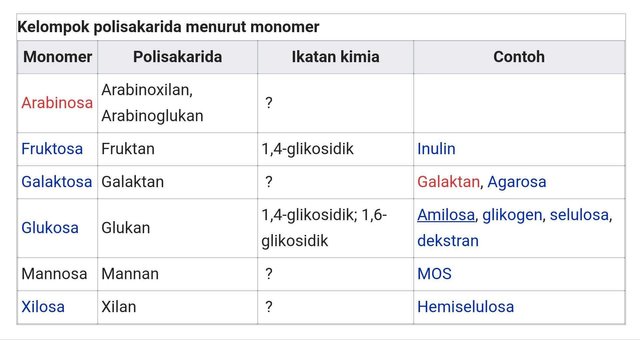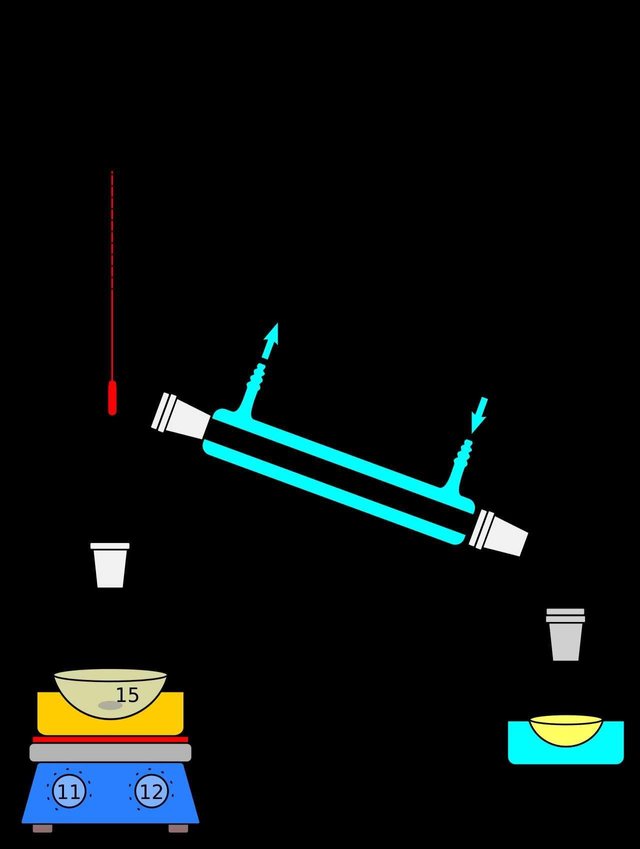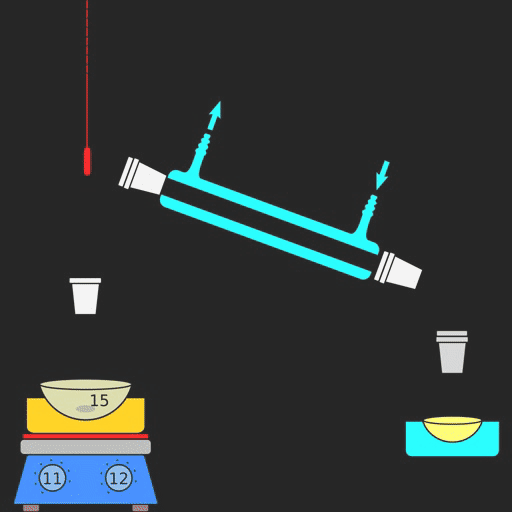Uses of Polysaccharide
- Polysaccharides are: polymers consisting of hundreds to thousands of monosaccharide units associated with glycosidic bonds. [Need reference] Polysaccharides are carbohydrates, so it only consists of carbon atoms (C), hydrogen (H), and oxygen (O). Examples of polysaccharides are starch, glycogen, agarose, and cellulose. Some complex polysaccharides also have additional atoms such as nitrogen, such as pectin, chitin, and lignin.

Polysaccharides include the most commonly found compounds on earth (cellulose) and supply the energy and activity for life in them.
Type and naming
Polysaccharides have a large molecular size so easy to find variations in it. This variation can often be seen differently through its physical properties.
According to its structure, known straight and branched polysaccharides. The more branches a molecule possesses make the polysaccharide tend to be sticky.
According to its function, polysaccharides are divided into storage polysaccharides and structural polysaccharides [need references] The backup polysaccharides serve as a reservoir of the energy suppliers (in the form of sugars) the cell needs, by hydrolysisimatis. [Need reference] The constituent polysaccharide is the constituent material cell or network [need a referral]. The constituent polysaccharides are usually difficult to decompose biologically and require strong acids to break the molecular bond. In contrast, the reserve polysaccharide is readily biodegradable.
Common polysaccharides are named by their constituent monomers. Polysaccharides composed of glucose are called glucan, while mannose is called mannan.

Starch
- Starch is: a reserve polysaccharide in plants to process lifting chemicals from living cells to move plant cell processes [need reference] The constituent glucose monomers are linked to alpha 1-4. [Need reference] The simplest form of starch and The more complex form of starch is amylopectin which is a branched polymer with an alpha 1-6 bond at the branching point.
Glycogen
- Glycogen is a polysaccharide of deposits in the animal's body to help process cells in a failed blood vessel then this structure is developed in living cells to enter sperm and living cells [need references] Glycogen structures are similar to amylopectin, but have more branching cells in the glucose input pit oxygen. [need references] Humans and other vertebrates store glycogen in liver cells and muscle cells [need references] Glycogen in cells will be hydrolyzed if there is an increase in the demand for sugar in the body. [Need a reference] It's just that the energy produced is so small that it does not can be relied upon as a source of energy in the long and long term to help the cell die.
Dekstran
- The dextran is a polysaccharide of a yeast bacterium consisting of a 1-α alpha-D-hlukosa chain, which has alpha 1-3 branches and some having cabnga alpha 1-2 or alpha 1-4 [need references] Plaque on tooth surface caused by bacteria known as dextran. Dextran has also been produced chemically producing synthetic dextran.
Structural Polysaccharides
Selulosa
- Cellulose is: the main component of cell wall composition in plants, can work smoothly when oxygen and carbohydrates when the cells move quickly and directly fill the water to launch the cell. Cellulose is: the most abundant compound on earth, which is produced nearly 100 billion tons per year. For cellulosic glycosidic bonds different from starch cellulose monomers are entirely contained in plant beta configurations in which cells work directly to process the fruit directly.
Chitin
- Chitin is: carbohydrates composing artropoda exoskeleton to avoid pests in plants (insects, spiders, crustaceans). Chitin consists of glucose monomers with full branches that can also contain nitrogen. Chitin is: pure-looking organelle skin, but will harden when coated with calcium carbonate. Chitin is also found on the cell wall of the fungus. Chitin has been used to make strong and flexible operation yarns and will decompose after injuries or incisions heal by containing fossils on the skin.
Pectin
- Pectin is a complex (complicated) carbohydrate that is a heteropolysaccharide. Pectin is mostly contained in the cell wall of primary terrestrial plants. Pectin has a bond type of 1.4 α-D-galactosiluronic acid residue.
Referensi
.
- The activation energy is: the energy required for a chemical reaction to occur. Here, the sparks produced by steel that rub against the ferroserium provide activation energy to light a fire on the Bunsen burner. The blue bunsen fire will survive by itself once the sparks disappear.

- Tantalum pentoxide, also known as tantalum (V) oxide, is an inorganic compound with the formula Ta2O5. It is a white solid that is insoluble in all solvents but can be attacked by strong bases and hydrofluoric acid. Ta2O5 is an inert material with high refraction index and low absorbance (colorless), making it useful for coating. It is also used extensively in the production of capacitors, as it has a high dielectric constant.

- The alkali metal is a group (column) in the periodic table containing lithium (Li), sodium (Na), potassium (K), [note 1] rubidium (Rb), cesium (Cs), [note 2] and franium (Fr). This group lies on the block-s of the periodic table because all the alkali metals have their outer electrons in the s-orbital position: the electron / element configuration is reflected in their characteristic properties. Alkali metals present the best examples of trends in group trends on the periodic table, with elements that exhibit well-characterized homologous behavior.
Upvote and follow Resteem
@petrixsteem
